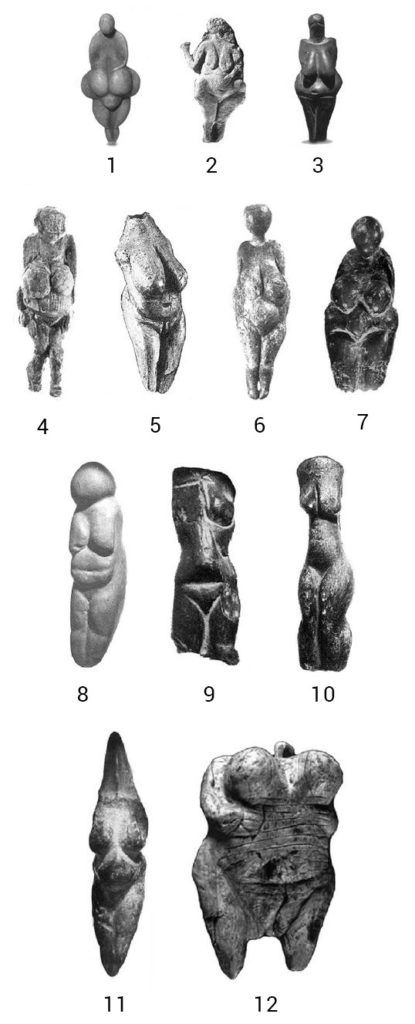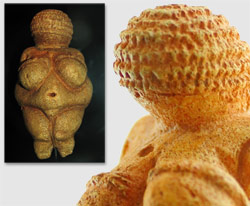
Venus of Willendorf
Carved some 30,000 years ago, the Venus of Willendorf is one of the earliest images of the body made by humankind. The figurine was made with great skill, as were many others like it. But why should certain parts of the body be exaggerated, while others are ignored?
Discovered on the banks of the Danube River in Austria, it was most likely made by hunter-gatherers who lived in the area. These Paleolithic ancestors lived in a harsh ice-age environment where survival was their predominant concern, so features of fatness and fertility would have been highly desirable. The body parts that mattered most – and were more than likely the most attractive to them – had to do with successful reproduction: the breasts and pelvic girdle. So these were isolated and amplified by the artist.
The Venus is 11.1 cm high, or 4-3/8 inches, a size that fits comfortably in the palm of the hand. This small scale was very deliberate and allowed whoever carved (or, perhaps owned) this figurine to easily carry it around. Since the most conspicuous elements of her anatomy are those that deal with the process of reproduction and child rearing, it is likely that she served as some kind of fertility symbol or charm.
Neuroscientist V.S. Ramachandran and others speculate that preferring or emphasizing one part of an image over another has to do with a hard-wiring of the brain. They postulate that throughout history our images reflect what our cultures consider most important.
In neurological terms, our brain is hyper-normally stimulated by what we deem most important, and the activated neuronal response drives the artist to create what he does, in the way that he does.

External Stories and Videos

Venus of Willendorf
What cultural role did this 4.4″ tall statuette of a female figure play in society over 25,000 years ago?

